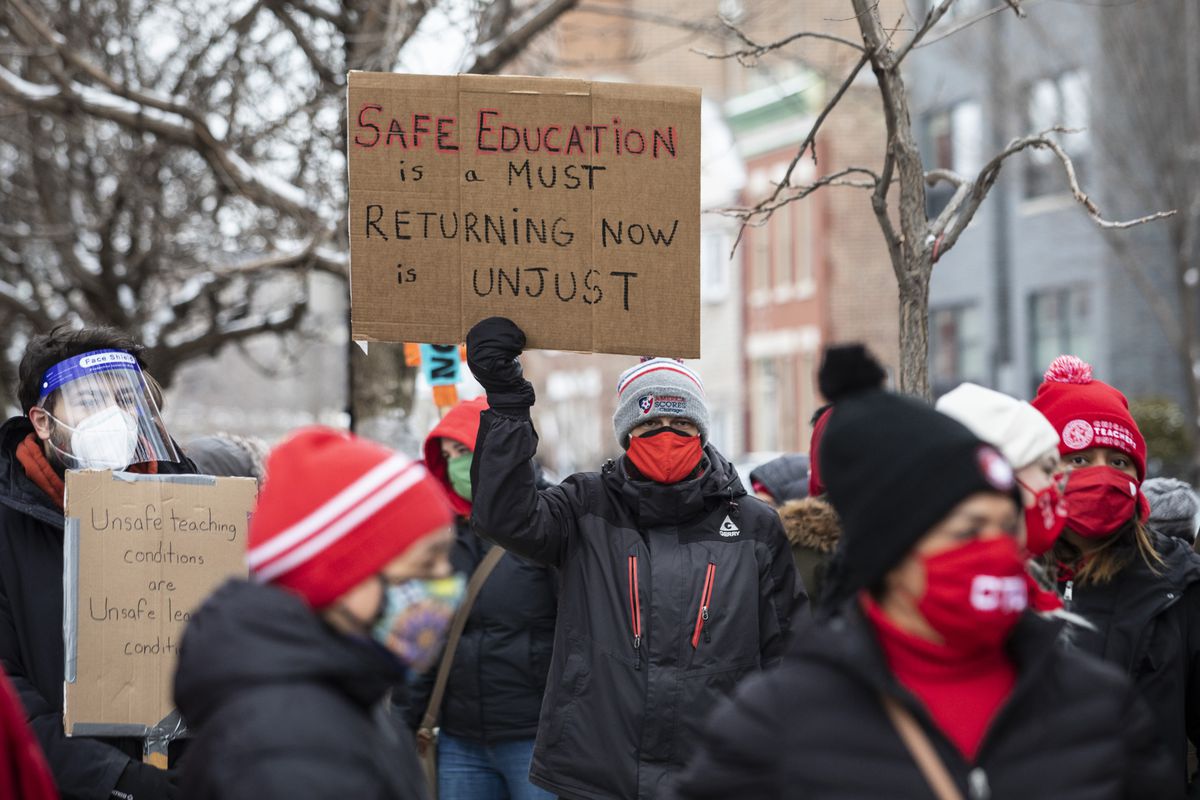As the Omicron variant surges, infecting more and more each day, the question of how much can be reopened has come up.
When life shut down in 2020 as a precaution against the unknown and sweeping COVID-19 virus, classrooms moved to the internet. Now there’s a push to reintegrate students into the physical classroom again.
The fight ultimately seems to fall between those concerned about the health of students, especially those too young to be vaccinated, and those who fear that years without in-person education will have long term adverse effects on development and the psychological health of the children learning from home.
Central to this fight have been teachers and teacher unions, many of whom feel that the return to in-person teaching is dangerous both to them and to their students, leading to strikes across the country.
In Chicago, the Chicago Teachers Union (CTU) was engaged in a staunch struggle against the city administration, including Mayor Lori Lightfoot. The CTU went on strike for 11 days, until an agreement was reached with the city on Jan. 10, The fight between them was intense, with the head of the CTU calling Lightfoot “relentlessly stupid” in her dealings with the union, while Lightfoot decried their walk out as criminal.
On Jan. 11 Lightfoot tweeted that she had tested positive for COVID-19 and would be working from home in accordance with CDC guidelines, a move which many expressed was hypocritical in the replies to her original tweet. Especially as Chicago Public Schools (CPS) had locked teachers out of online classrooms to prevent them from teaching at home.
Focusing more on national reopening efforts, situations vary from place to place. While some schools have reopened as normal, others have struggled. A common issue that has arisen has been a lack of staffing. Some districts have had to transition to online learning because so many teachers were infected and could not work.
This presents another challenge to the question of reopening schools, as arguably the possibility of random school shutdowns could be just as disruptive to if not more disruptive than a consistently online approach.
A proposed solution for safety is known as “test-to-stay”, wherein students and teachers would be able to stay in school if exposed but not positive, and would be tested regularly. However, the viability of this method is in question as there is a shortage of COVID-19 tests far greater than what would be needed to sustain such a policy.
Should schools reopen? It’s hard to say, because of the transmissibility of the Omicron variant it may be difficult to make long lasting policy decisions. Reported cases have been in slight decline since a peak of over 806,000 daily cases on the 14th, but the average was still over 600,000 as of writing. And while in-person school may be preferable and even advantageous in terms of academic and social outcomes, with European students reporting worse academic performance after comparatively shorter distance learning periods.
At the same time, it’s possible that students may be forced home again, a scenario which would be the worst of both worlds, given the sudden shift away from the classroom this would entail. Ultimately the path forward is still determined by the rise and fall of new variants as they come.

